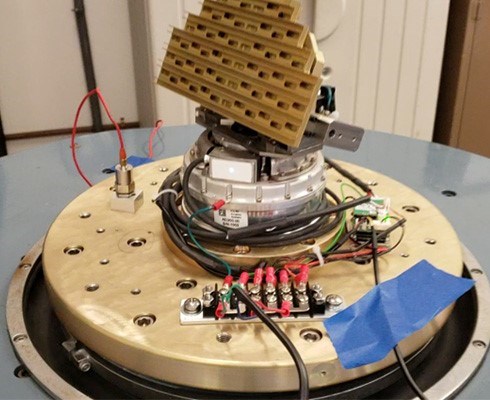Resolute Encoders Improve RF Antenna Accuracy, Resolution
Renishaw and Pacific Antenna Systems have teamed up, using Resolute encoders to provide robust, accurate and versatile RF antennas.
Share





Renishaw and Pacific Antenna Systems (PAS) have teamed up to design and build improved antenna systems for a wide range of applications.

Background
PAS designs, fabricates and manufactures antenna systems that use radio frequencies (RF) ranging from 1-110 GHz. Applications include high-resolution radar, high-rate data communications for line-of-sight and satellite communications, and high-power microwave systems for drone countermeasures. The basic principle of an antenna is the accurate positioning of an RF beam on a target.
PAS utilizes several different electro-mechanical designs for its antennas, depending on the application. Rotary position encoders are installed on each motion axis (gimbal) to provide the required precision and accuracy.
In airborne systems, challenging environmental conditions such as sub-zero temperatures, RF noise and high mechanical vibration complicate the task of finding a suitable encoder. Previous PAS antenna systems suffered from encoder performance issues such as lower accuracy, poor RF interference immunity (RFI) and vibration rejection.
Thus, PAS has worked with Renishaw’s encoder products to improve the positioning accuracy and resolution of its servo control loops by over two orders of magnitude.
Challenges
Radar and RF communications systems for airborne applications need to be light-weight, compact and powerful. These systems must also be modular and easy to assemble.
PAS airborne communication systems are vital for the high-data rate communications of aircraft such as NASA’s WB57 research plane. The encoder on each gimbal must function at altitudes of over 40,000 feet and at temperatures below ‑40 degrees Fahrenheit. High rotational speeds and accelerations are also essential in order to allow fast beam pointing and scanning operations.
Encoders are critical components in communications and radar applications and need to be highly reliable, as a failure could potentially endanger lives.
Solution and Results
PAS uses different gimbal designs for is monostatic radar and comms systems, but they all use the Renishaw’s Resolute absolute optical encoder with BiSS-C serial protocol and 26-bit or 32-bit resolution options.
These encoders were chosen for their accuracy and high resolution, and have proven to be highly resistant to vibration. If problems do arise, the Resolute encoder has advanced diagnostic and setup tools to quickly resolve issues. The BiSS-C serial protocol for the encoder signal output is open architecture, easy to use and fast. These features make Resolute with BiSS-C a reliable and functional solution, and the robust and versatile Resolute encoder has enabled PAS to design and build antenna systems for a wide range of applications.























